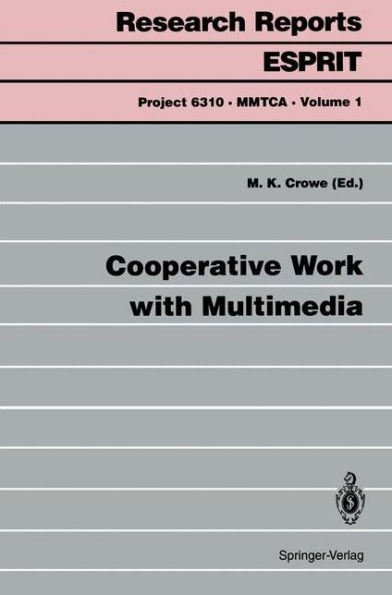Cooperative Work with Multimedia
The purpose of this book is to present a project from the ESPRIT Specific Programme of European Research and Development in Information Technology, project number 6310, known as MMTCA: Multimedia Toolbox for Cooperative Applications. This project ran from 1992 to 1994, and concluded with a product which is probably of great usefulness to all business organisations. MMTCA enables managers to set up arrangements or to delegate tasks involving cooperation between people in different places using standard Windows software tools for what-you-see-is-what-I-see (wySIWIS) cooperation. MMTCA is the only product that delivers all of these points. Several trends in 1994 lead the authors to believe that MMTCA will become more important over the coming months: • the continuing popularity of personal computers and Microsoft's Windows operating system, • the growing importance of computer-supported cooperative work, and • the availability of powerful networks and satellites for wide-area communications. In MMTCA it is not necessary for the manager to know anything about computer programming, but merely to have a user's working knowledge of the appli cation software (spreadsheets etc.) that is used in his office. The MMTCA approach envisages two stages where MMTCA's facilities are used: • by the manager: setting up or organising work to be done, • by the participants: carrying out the resulting tasks.
1030065632
Cooperative Work with Multimedia
The purpose of this book is to present a project from the ESPRIT Specific Programme of European Research and Development in Information Technology, project number 6310, known as MMTCA: Multimedia Toolbox for Cooperative Applications. This project ran from 1992 to 1994, and concluded with a product which is probably of great usefulness to all business organisations. MMTCA enables managers to set up arrangements or to delegate tasks involving cooperation between people in different places using standard Windows software tools for what-you-see-is-what-I-see (wySIWIS) cooperation. MMTCA is the only product that delivers all of these points. Several trends in 1994 lead the authors to believe that MMTCA will become more important over the coming months: • the continuing popularity of personal computers and Microsoft's Windows operating system, • the growing importance of computer-supported cooperative work, and • the availability of powerful networks and satellites for wide-area communications. In MMTCA it is not necessary for the manager to know anything about computer programming, but merely to have a user's working knowledge of the appli cation software (spreadsheets etc.) that is used in his office. The MMTCA approach envisages two stages where MMTCA's facilities are used: • by the manager: setting up or organising work to be done, • by the participants: carrying out the resulting tasks.
54.99
In Stock
5
1

Cooperative Work with Multimedia
291
Cooperative Work with Multimedia
291Paperback
$54.99
54.99
In Stock

Product Details
| ISBN-13: | 9783540583158 |
|---|---|
| Publisher: | Springer Berlin Heidelberg |
| Publication date: | 03/29/1996 |
| Series: | Research Reports Esprit , #1 |
| Pages: | 291 |
| Product dimensions: | 6.10(w) x 9.25(h) x 0.03(d) |
From the B&N Reads Blog
